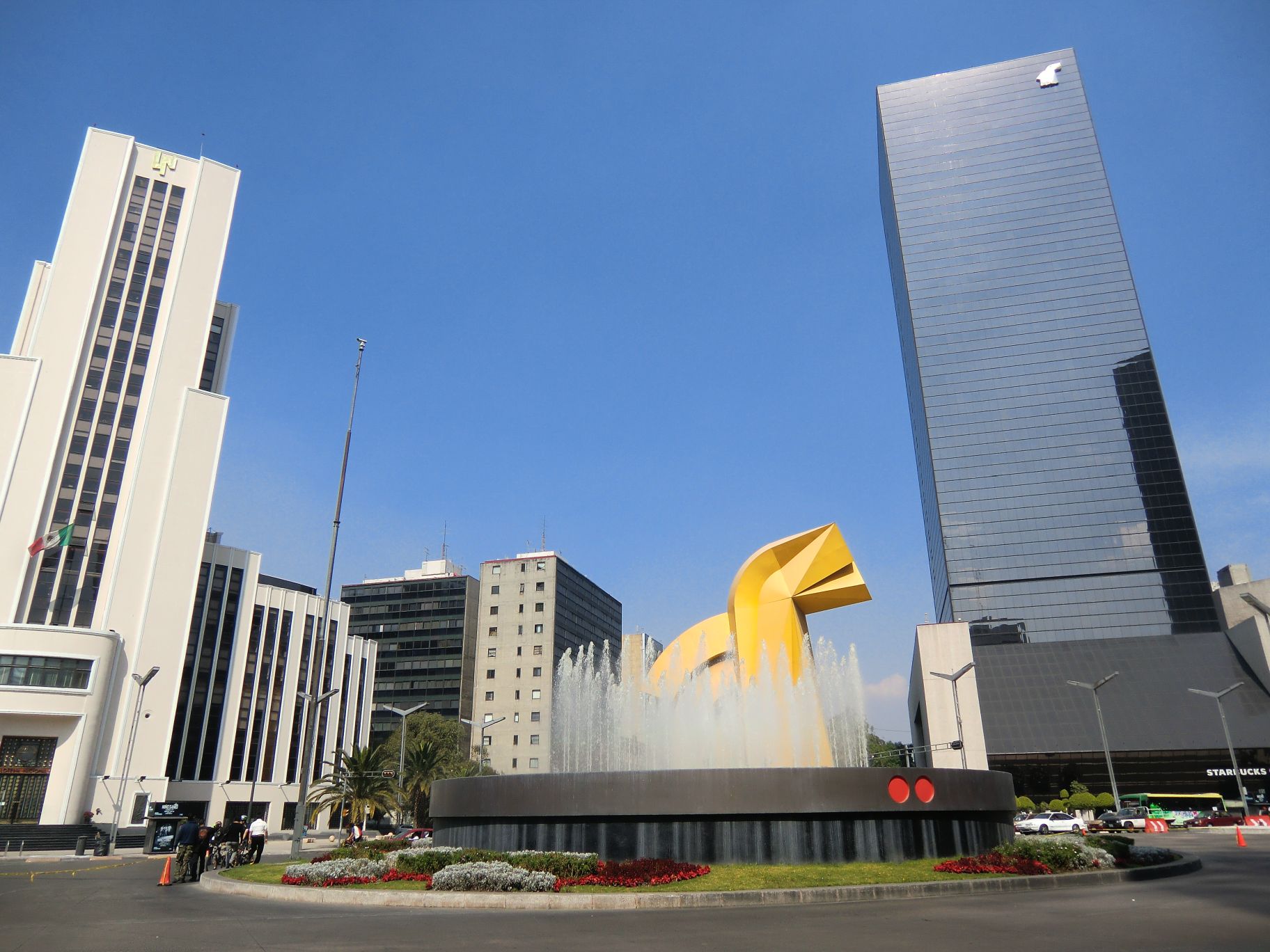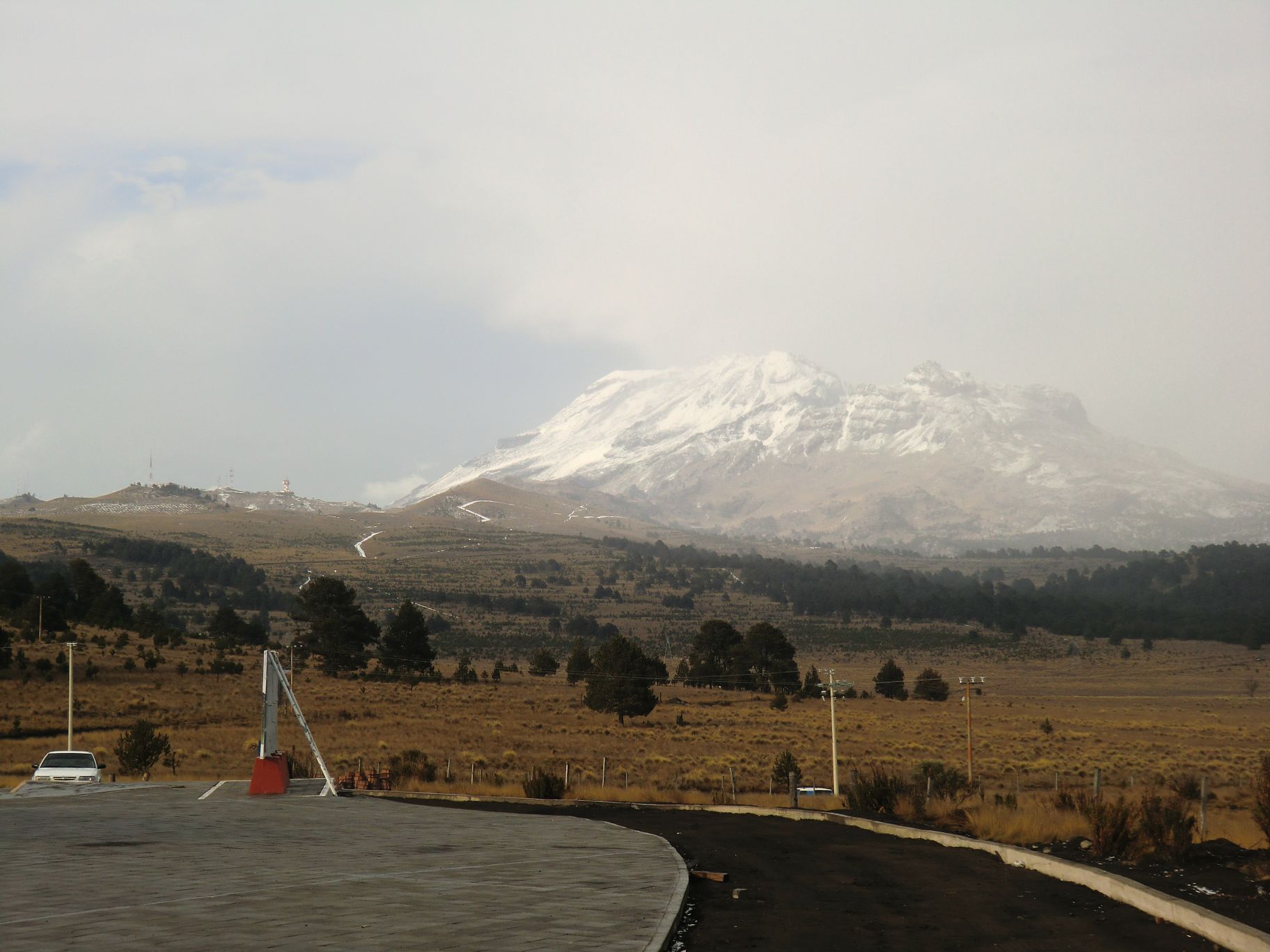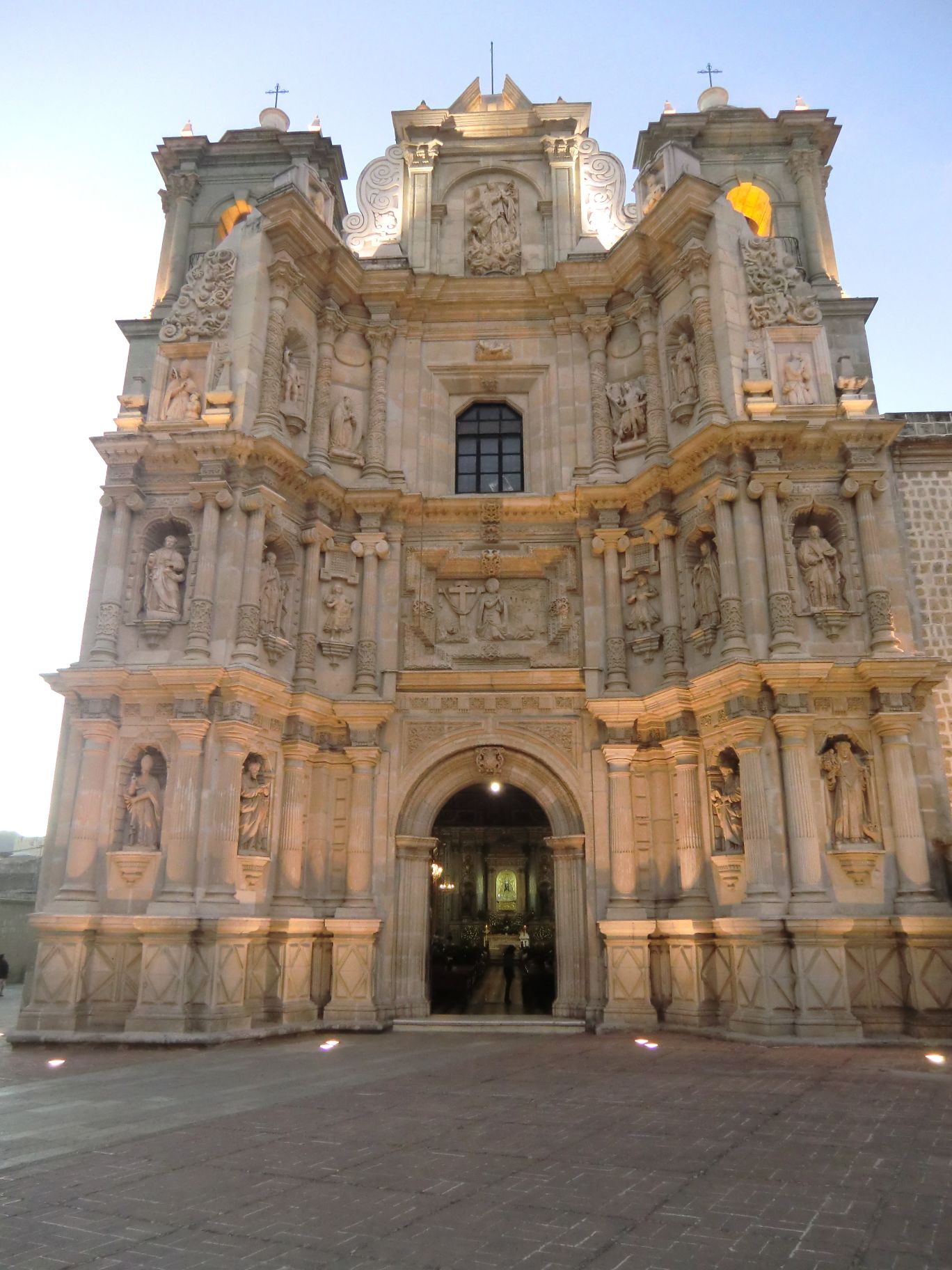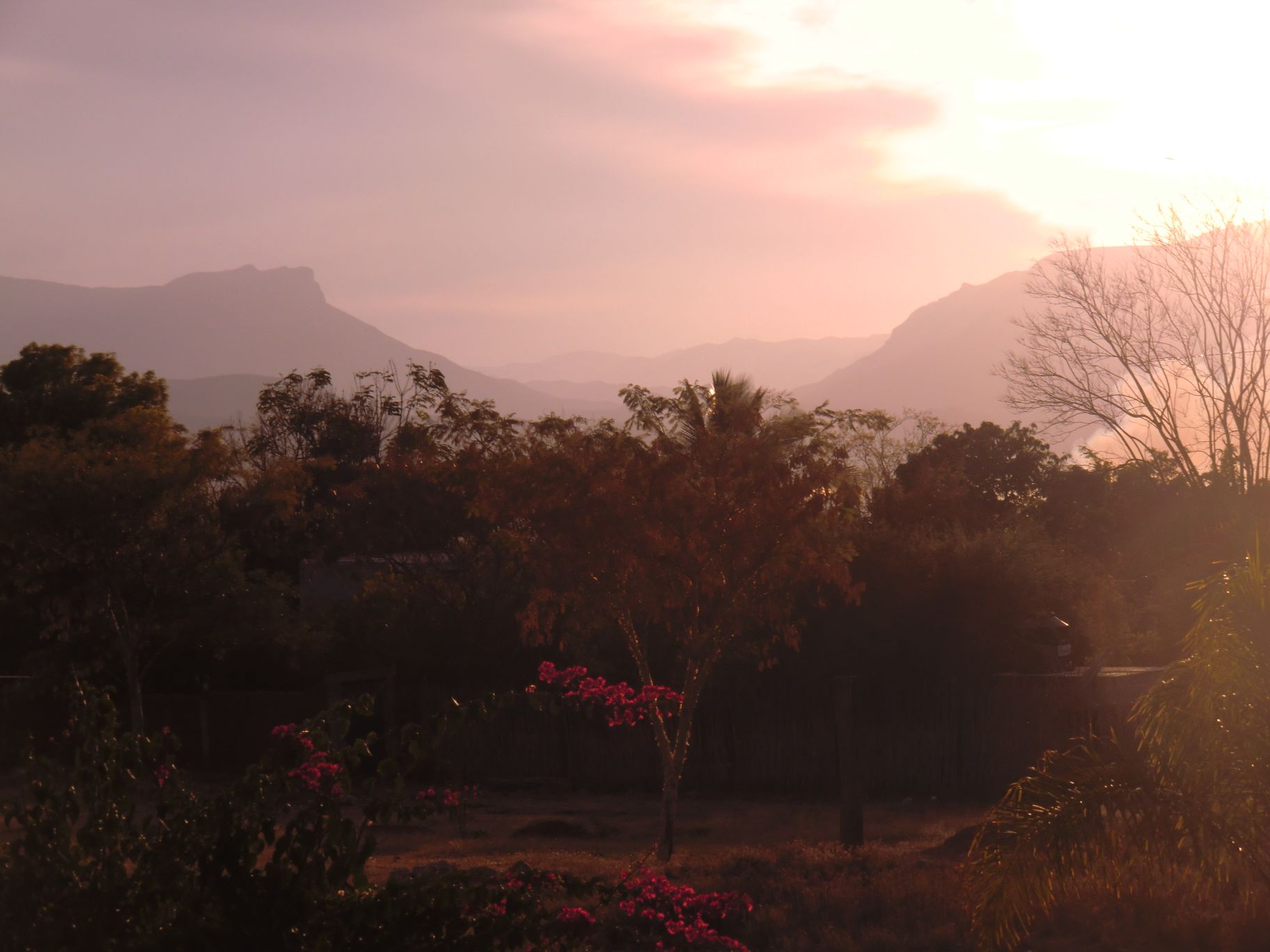Christmas eve in the airport of La Paz, waiting for a delayed flight to Mexico City. Our Christmas diner consists of two cans of beer and a small pack of peanuts in the aeroplane. We arrive in our Hostel just in time for a real Christmas Diner, sponsored by the hostel owner. We spend four nights in the big city, visit the Zocalo and the cathedral, and the slightly distant Teotihuacán. Teotihuacan is an ancient city with a vast area with pyramids and temples, mostly created before 0 AD without metal tools, wheel karts or domestic animals, that was abandoned already before the rise of the Aztecas.
Mexico City is a big buzzing place around Christmas, there seem to be funfairs on every plaza. The streets are crowded with lots of pretty new cars and trucks and still many many VW Beetles and mini vans. Still, it seems way less chaotic than some Asian metropolis.  Leaving buzzing Mexico City with very few usefull road signs - we head for lovely little town Amecameca on our way over the Paseo de Cortez. Hiking up the small hill Sacromonte there, we eventually get a great view of the two snow capped volcanos Popocatepetl and Ixtacchihuatl. They are the second and third largest elevations in Mexico. Between the two, we climb up to 3700 metres above sea level on the following two days. Thin air. We arrive at the summit of the pass at noon of New Years Eve in roaring thunderstorms with icy winds and hail showers. Luckily there is shelters and hot coffee, and the sky clears up later in the afternoon for magnificent views to the two volcanoes. Ixta's smoke cloud shines rosy at sunset on unpaved bumpy way down. Kathrin crashes, luckily without injuries. After nightfall, we hitch the remaining 15 or so kilometres to the City Centre of Cholula.
Leaving buzzing Mexico City with very few usefull road signs - we head for lovely little town Amecameca on our way over the Paseo de Cortez. Hiking up the small hill Sacromonte there, we eventually get a great view of the two snow capped volcanos Popocatepetl and Ixtacchihuatl. They are the second and third largest elevations in Mexico. Between the two, we climb up to 3700 metres above sea level on the following two days. Thin air. We arrive at the summit of the pass at noon of New Years Eve in roaring thunderstorms with icy winds and hail showers. Luckily there is shelters and hot coffee, and the sky clears up later in the afternoon for magnificent views to the two volcanoes. Ixta's smoke cloud shines rosy at sunset on unpaved bumpy way down. Kathrin crashes, luckily without injuries. After nightfall, we hitch the remaining 15 or so kilometres to the City Centre of Cholula.
Typical cobblestone streets, the churches around the Zocalo are nicely illuminated with blue shining chambers in the bell towers. New Years Eve with pizza in a Mexican fast food restaurant, a bottle of red wine from a Convenience Store, and a four star hotel room without bath tube. The day after we visit the worlds largest pyramid (by circumference) in town, a pile of rubble covered by grass and shrubs and trees, and topped by a big yellow church. When Cortez marched into Cholula in Medieval, he destroyed all shrines and promised to build a church for each shrine. That is why Cholula is plastered with dozens of churches. Some parts of the ancient pyramid structure have been restored and illustrate temple and palace foundations of a different scale.
{youtube}tKJar_iUG-Y{/youtube}
A worn out pedal bearing and a broken hard disk on my laptop were certainly not the best news on that New Years Day. However, in the nearby Puebla I get both bicycle and laptop fixed. The City Center of Puebla is UNESCO World Heritage. Its old colonial buildings are decorated with fancy colored tiles and there is a great marble and stucco decorated City hall. The Zocalo is crowded with tourists and street vendors and the load Mexican music there reminds me to some German folk music during the rural festivals back home.
laptop fixed. The City Center of Puebla is UNESCO World Heritage. Its old colonial buildings are decorated with fancy colored tiles and there is a great marble and stucco decorated City hall. The Zocalo is crowded with tourists and street vendors and the load Mexican music there reminds me to some German folk music during the rural festivals back home.
Off we go again, heading for Oaxaca. First there is heavy traffic on the narrow roads, but after Tecamachalco there is hardly traffic any more through the sierras. Countless climbs again, crossing a dry half desert with series rocky hills. Splendid views between bordering mountain ranges. Donkeys and goats on the road. After the climbs we enter almost tropical lush valleys with palms, citrus trees, bananas and corn and sugar cane plantations and all sorts of colourful birds. Villagers and truck drivers greet friendly on the road (mostly). Vicious flies yawn for our blood. Their bites itch for days.
The Zapoteca ruins, located on Monte Alban towering over the planes arround Oaxaca are famous. Between Christi Birth and 800 AD, roughly at the same time as the Aztecas at Teoticatlan, the Zapotecas had their prime time, and similar to the Aztecas, they build pyramids and temples with no iron, just by using flint stone and obsidian tools. Without iron axes and saws, the Zapotecas maintained an sustainable living in their environment. Nowadays, the surroundings mountains are widely deforested, and a vast urban area stretches out in the planes. On the way back down we make friends with some young and old locals who share their thoughts and their weed.
 |
|
